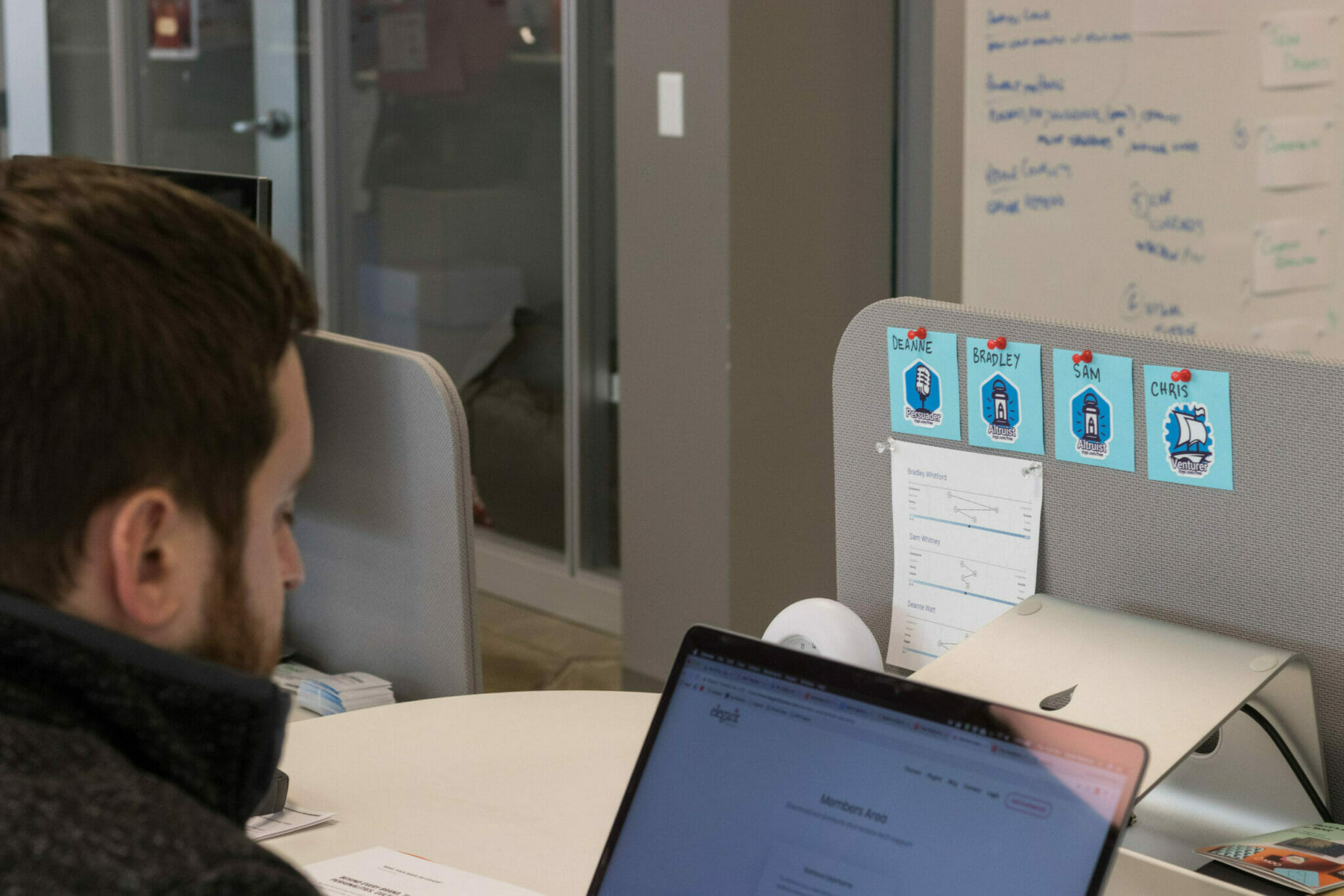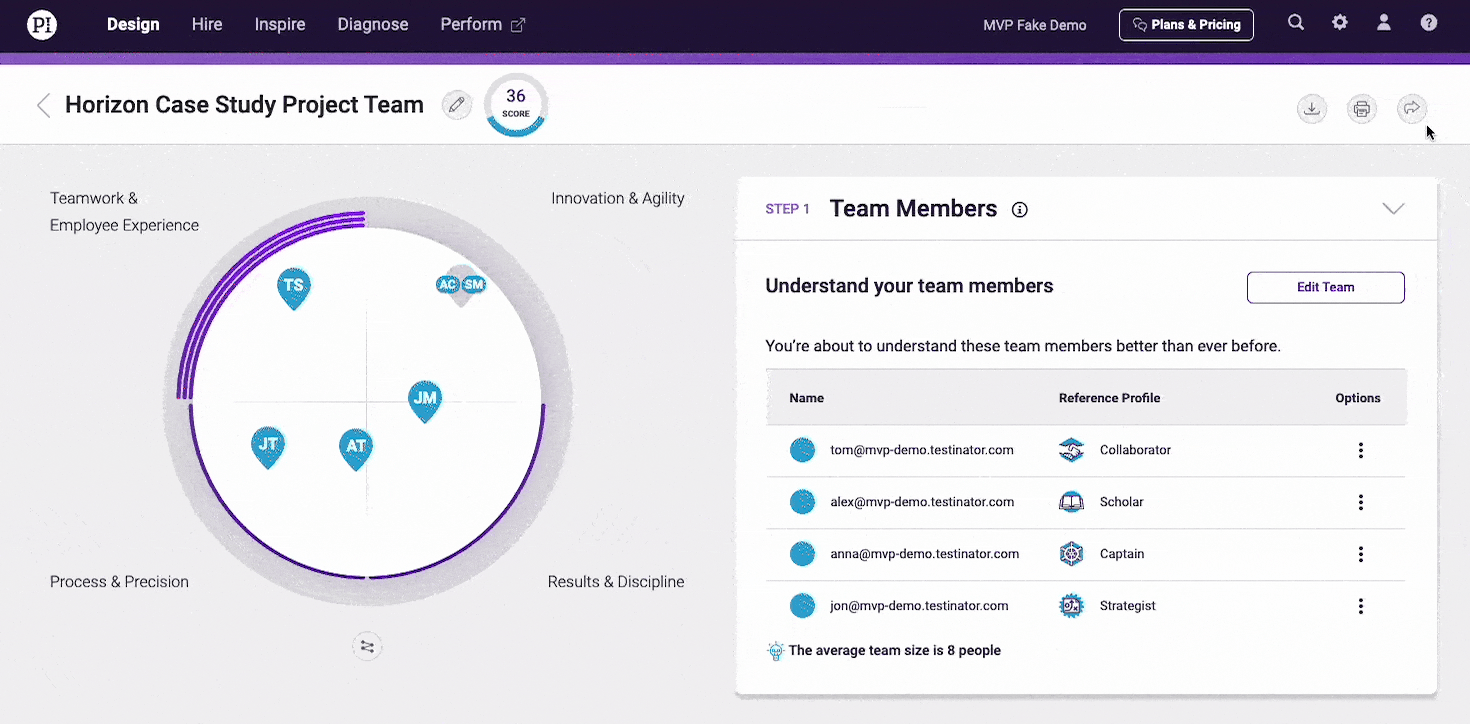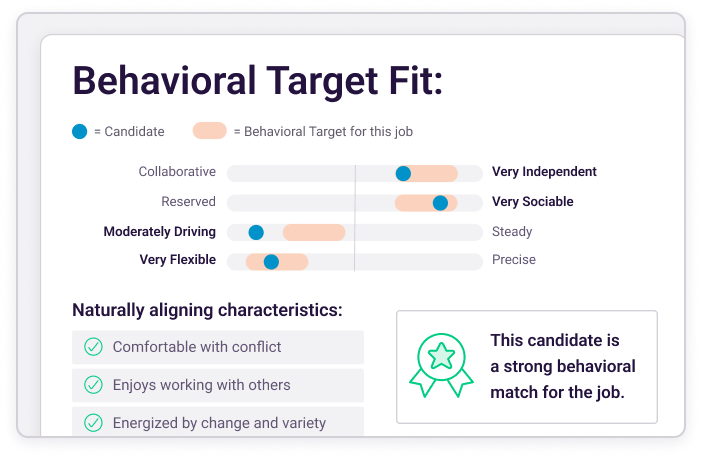Turnover: great for pastry fans, but less so for competitive businesses.
Every business is bound to experience some degree of turnover as their employees develop new skills, needs, and aspirations in their career. That being said, high turnover rates can leave organizations scrambling to fill gaps and recover lost productivity—leading to terrible consequences for your business as you seek out new employees.
What’s worse? According to Gallup, 42% of employee turnover is preventable—but too often, organizations overlook the steps they could take to keep their best talent.
Below, we’ll take a closer look at:
- What high turnover means and how it’s measured
- The top causes of employee turnover
- Strategies to reduce turnover and improve these metrics
What exactly is a high turnover rate?
In the workplace, a high turnover rate refers to the percentage of employees who leave a company within a specific time frame, by involuntary or voluntary turnover.
As a result, it is typically viewed as a warning sign that may point to deeper issues within an organization’s employee experience—with some requiring immediate attention.
Right person. Right role. Every time.
PI Hire gives you the data you need to better predict which candidate will succeed in the role, and stay for the long term.
How to calculate employee turnover rates
The turnover rate is typically expressed as a percentage, reflecting how many employees leave your company during a specific time period compared to your average total workforce. For example, an annual turnover rate would be calculated by:
The number of employees who left in a month is divided by the average number of employees during the month (multiplied by 100 for a percentage).
You can also easily adjust the formula to calculate turnover rates for any given period of time.
One important note to keep in mind: “High turnover” can look very different, depending on your industry. For instance, industries like retail or hospitality often experience higher turnover than sectors such as healthcare or finance.
By comparing your turnover rates to industry benchmarks, you can better gauge whether your numbers indicate a serious problem—or are within the mean.
How a high turnover rate affects the organization and company culture
Here are some of the key ways high turnover can affect your organization and work environment:
- Negative company image or reputation: A high turnover rate can make it harder to attract top talent. Prospective employees may hesitate to join a company where many people seem to be leaving—for pretty obvious reasons.
- Loss of institutional knowledge: Every time an employee leaves, valuable employee expertise, client relationships, and operational insights go with them. This loss can be costly and disruptive, especially for roles or industries requiring specialized knowledge.
- Reduced employee engagement: Employees in high turnover environments may feel less motivated or connected to their work, resulting in lower engagement and productivity.
- High financial costs: Turnover is expensive. The process of recruiting, hiring, and onboarding replacements can add up pretty quickly—not to mention the productivity losses while positions remain unfilled. Globally, disengaged employees cost businesses $8.9 trillion annually in lost productivity—equivalent to 9% of the global GDP.
What causes employee turnover?
Employee turnover can occur for a variety of reasons. Understanding those causes is essential for addressing the root issues and improving employee retention.
- Lack of engagement or job satisfaction: When employees don’t feel connected to their work, they’re more likely to experience burnout—and more likely to seek opportunities elsewhere.
- Better opportunities elsewhere: Employees may leave for higher compensation, better benefits, a different company culture, or more appealing perks, such as remote work.
- Poor work-life balance: Stress, long hours, and unrealistic expectations can lead employees to feel overworked and burned out, making them more likely to resign.
- Problems with management: Bad managers or a lack of feedback and recognition can drive good employees away. Additionally, employees often leave when they see no opportunities for professional development or advancement.
- Negative workplace culture: A toxic or unwelcoming environment can lead to widespread dissatisfaction, further exacerbating turnover issues.
By recognizing these common drivers, organizations can take proactive steps to address issues before they result in costly turnover.
How to reduce high employee turnover rate
Reducing employee turnover requires a proactive approach, particularly from HR managers and organizational leaders. But by identifying key areas for improvement and implementing targeted strategies, businesses can go a long way in creating a more stable, engaged workforce.
- Talk openly about compensation and career advancement: Transparent conversations about salaries, benefits, and career development show employees that their contributions are valued. Offering better deals or promoting individuals when appropriate can also enhance retention.
- Strengthen manager-employee relationships: Building trust and open communication between managers and their teams fosters engagement. This can be especially important with new hires.
- Create opportunities for recognition and praise: Encouraging managers to acknowledge achievements and celebrate successes can boost morale and make employees feel more valued.
- Remove barriers to performance: When managers address problems effectively, they eliminate obstacles that could hinder organizational performance and employee satisfaction. Conversely, neglecting these issues can harm both retention and productivity.
- Conduct regular evaluations and set realistic goals: Peer and manager evaluations, along with clear and attainable objectives, give employees the guidance they need to succeed. Annual reviews can also provide valuable opportunities for feedback and goal-setting.
- Invest in professional development: Providing access to learning platforms and career advancement resources equips employees with the skills and knowledge they need to grow within the organization.
How The Predictive Index can help
The bottom line? High turnover rates can disrupt even the strongest organizations, but they don’t have to.
The Predictive Index offers data-driven tools and strategies to help businesses understand the root causes of turnover, improve manager-employee relationships, and build a more engaged, productive workforce.
PI tools they need to align their teams with broader goals while fostering environments where employees feel valued and supported.
Discover how The Predictive Index can help you tackle turnover and transform your workplace today.








